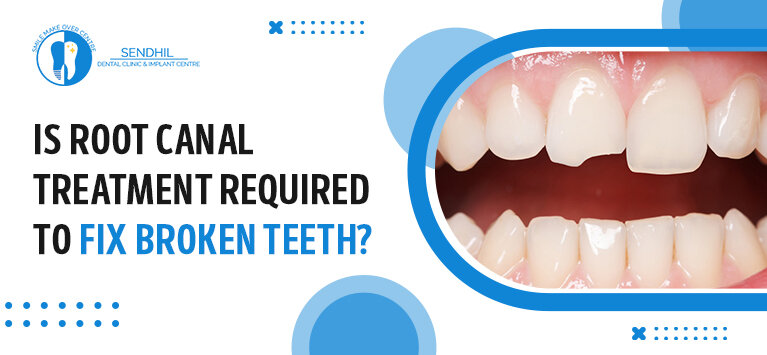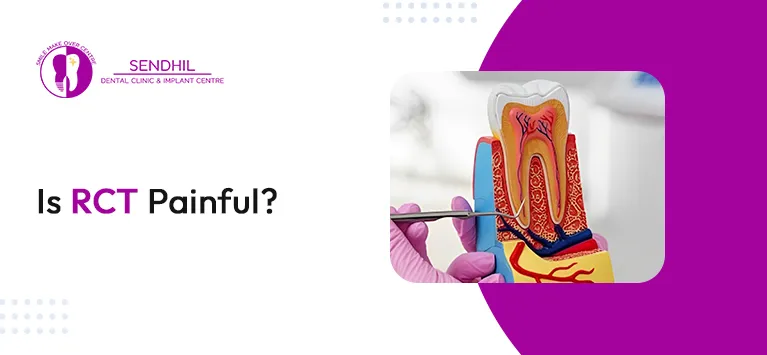
Is Root Canal Treatment required to fix broken teeth?
Chips, Cracks, and damage in teeth can compromise the structure of your teeth. Whether a tooth is damaged due to sports injury, accident, or bacterial infection, you have different options like dental bonding, tooth fillings, dental veneers, and dental crowns to restore the structure and integrity of the damaged teeth.
Repairing a mildly damaged tooth, in certain cases, mandates a mildly invasive procedure called Root Canal Treatment. It is preferred to repair an infected tooth internally.
Are you surprised dentists prefer the internal repair therapeutic solution to fix cracked teeth? Keep reading.
Table of Contents
What is Root Canal Treatment?
Root Canal Treatment (RCT), also known as Endodontic treatment, involves removing the infected tooth pulp at the hollow center of a tooth. The pulp chamber comprises nerves, blood vessels, and connective tissues. Hence the pulp chamber takes care of a tooth’s sensory functions, keeping it moisturized, and aids in nutritional supply.
When the pulp is infected, it will spread to other areas inside the tooth. So dentists extract the diseased pulp, clean the region, fill it with gutta-percha, and close the tooth with a crown.
When do dentists perform RCT to fix a broken tooth?
Dentists categorize damages in a tooth as Ellis Classification 1, 2, and 3 depending on the degree of cracks. Ellis Classes 1 and 2 can be treated with cosmetic dentistry options like tooth bonding or others. RCT is essential for Ellis Class 3.
Root Canal Treatment is unnecessary for fixing mild to moderate fractured or broken teeth cases. Dentists must treat the cracked regions and the exposed layers when the crack is quite deep, unveiling the layers inside the tooth.
In such circumstances, Root Canal Therapy is essential. Meanwhile, the underlying causes of preferring root canal procedures to treat chips or cracks in the front and back teeth vary.
- Front teeth – Teeth in the front of our mouth are commonly damaged due to injuries. When a front tooth is broken and does not have enough healthy bone structure to support the prosthetic appliance, root canal procedure is necessary to place a post and core-type dental restoration. It involves placing a post in the prepared root canal. As the post protrudes out of the gums, a synthetic material is placed on top of it to create a sufficient tooth structure to cement a dental cap.
- Back teeth – Teeth at the back of our mouth are less likely to get cracks due to physical injuries. Meanwhile, factors like deep cavities and restored restorations can cause the posterior teeth to be cracked, shattered, or badly damaged, increasing the risk of bacterial invasion on the pulp inside. So endodontic treatment is necessary to save the tooth. Luckily, back teeth have more tooth structure than front teeth. So post & care restorations are needed very rarely in this case.
Are there any alternatives?
Pulp capping is the procedure performed during cavity treatments and dental restoration treatments when the pulp is exposed. It aims at ceasing bacterial growth inside the pulp chamber and promoting pulp healing.
However, dentists determine whether a broken tooth treatment needs direct pulp capping or RCT depending on the degree of crack in a tooth.
If a dentist detects a tooth has mild traumatic exposure, pulp capping is enough to repair it. Otherwise, root canal procedure is required.
Bottom line
There are several dental procedures to restore a tooth, regardless of how badly it has been damaged. Even though the damage paves the way for infections inside the tooth, dentists can disinfect and preserve the tooth with a root canal procedure.
Want to know more about repairing and restoring a chipped, cracked or broken tooth? Ask us in the comment section. You will get a response from our dentists soon.
















